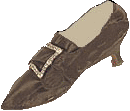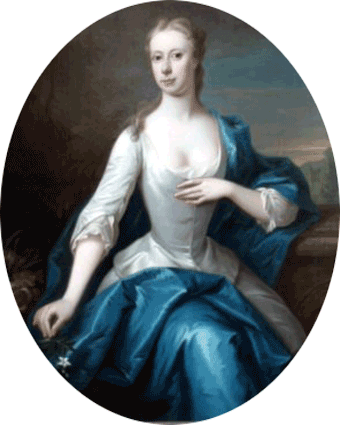
Exactly
100
years later,
another male
descendant
died in 1816,
leaving
behind only
one legal
heir, his
daughter.
But the name
Bayntun did
survive from
origins much
further back,
through
the many
brothers
of these
successive
male heirs
in a period
of history
spanning more than
500 years.
![]()
|
|
19 successive male generations, all direct descendants, with the name Bayntun alone, came to an end with the death of John in 1716 – his sister, Anne, became the first Bayntun heiress in the family |
When H enry Bayntun died suddenly in 1691 at the age of 27, he left behind him two young children – John (aged 3) and Anne (aged 2). These children were placed under the guardianship of Mr. Walter Grubbe Esq. of Eastwell House, Potterne. Their mother also died suddenly in 1703.
John inherited his father's estate, including the Manor of Bromham and he held the title Lord of the Manor of Bromham for 25 years of his short life of 28 years before he, like his father, died at a very young age.
He was married to Catherine Brouncker but they had no children.His tombstone indicates he was the 19th in lineal descent from Sir Henry Bayntun, Knight of the Household to King Henry II and upon his death, the long line of direct male Bayntun descendants had died out in the county.
Subsequently his estate was passed onto his only sister Anne Bayntun who was married at the time to Edward Rolt of Sacombe Park and Ann's second son, Edward Rolt, was named as John's successor and Lord of the Manor of Bromham.
In view of his inheritance and the noble name of Bayntun, Edward dropped the name Rolt from his surname and was generally known as Edward Bayntun. However in 1762 he was made a Baronet by George III and was thereafter known as Sir Edward Batyntun Rolt.
His mistress, Mary Poynter, bore him six children and up until 1752 marriage by custom and repute was legal marriage in England. However in 1752 this was abolished and children whose parents had not been married in church were illegitimate and deemed not to have parents. This meant his six children would be considered illegitimate and therefore he had no legal heir.
But Sir Edward and Mary got married in secret in 1752 and eventually produced a son, named Andrew – a rightful heir. Andrew went on to marry The Right Honourable Lady Maria Coventry in 1777 but were separated in 1783 when Maria had an affair with Sir Andrew's nephew and eventually legally divorced in 1787. The couple had a young daughter aged just 3 years at the time of her parent's separation.
As a result, in 1788, Sir Edward Bayntun was forced to declare his granddaughter, Maria Barbara Bayntun Rolt, first in the entail of the Bayntun estate. No doubt he would have preferred his estate to be passed onto a male heir which would not involve a name change, but at the time of his decision Maria Barbara was the only legal and legitimate heiress.
This must have been a big disappointment to Sir Edward as his son's divorce left him with no legitimate male grandchild to bestow the honour of the Lordship of the Manor of Bromham on.
In 1797, at the age of 17, Maria Barbara and the 27 year old Reverend John Starky eloped and were married, much to the surprise of her family. When her father, Sir Andrew, died in 1816 she became heiress to a considerable estate and was known thereafter as Maria Barbara Bayntun Starky. The title Lord of the Manor of Bromham was subsequently passed onto her eldest son, John Edward Andrew Bayntun Starky.
The title continued in the Bayntun Starky family until John Bayntun Starky ran up debts so bad, his creditors foreclosed on him and all his estates were sold, including Spye Park House and the Abbey of Stanley. His grandmother, Maria Barbara, the heiress to the Bayntun fortune was still alive at the time.
All his estates were sold and from that day forward the Lordship of the Manor of Bromham was relinquished by the Bayntun descendants.


